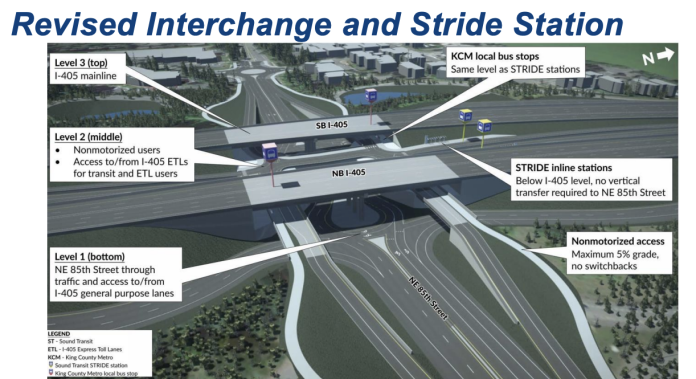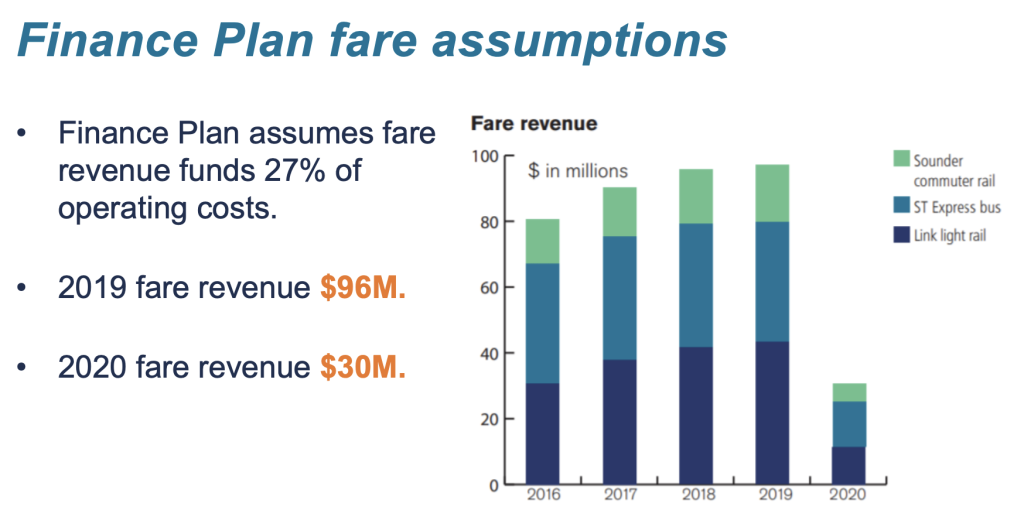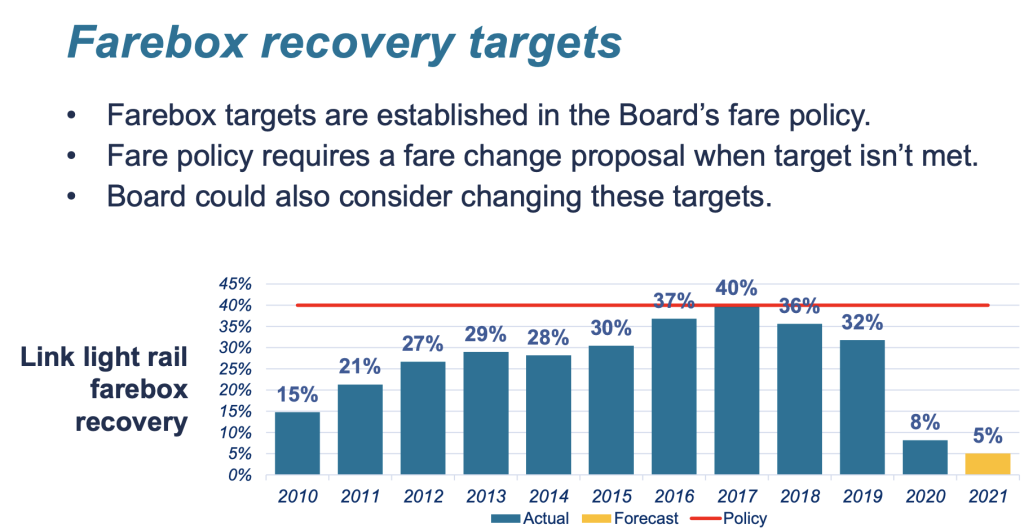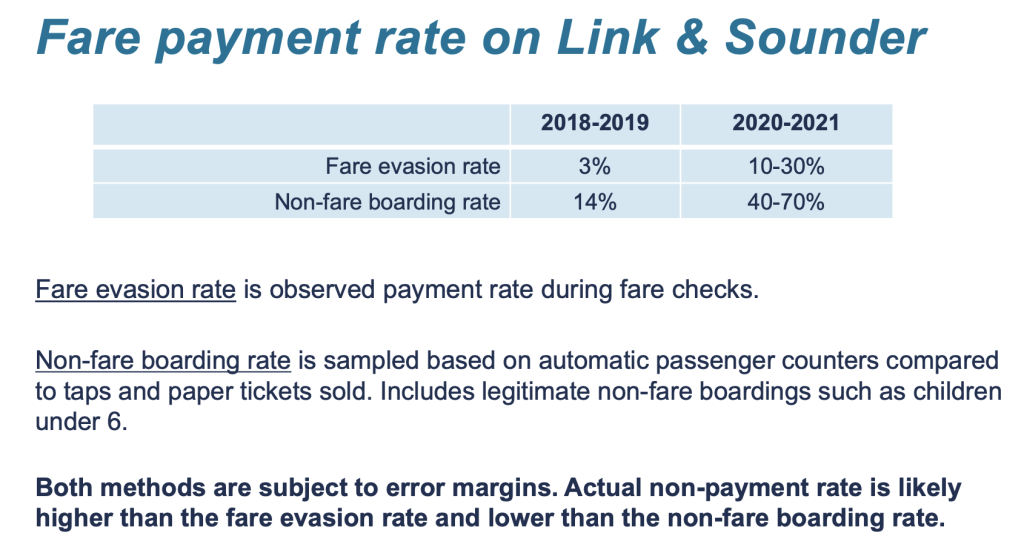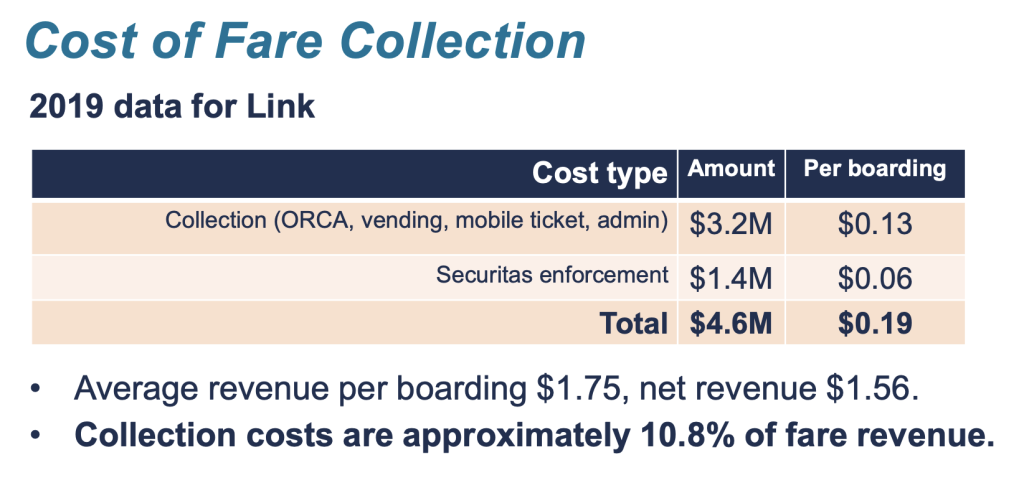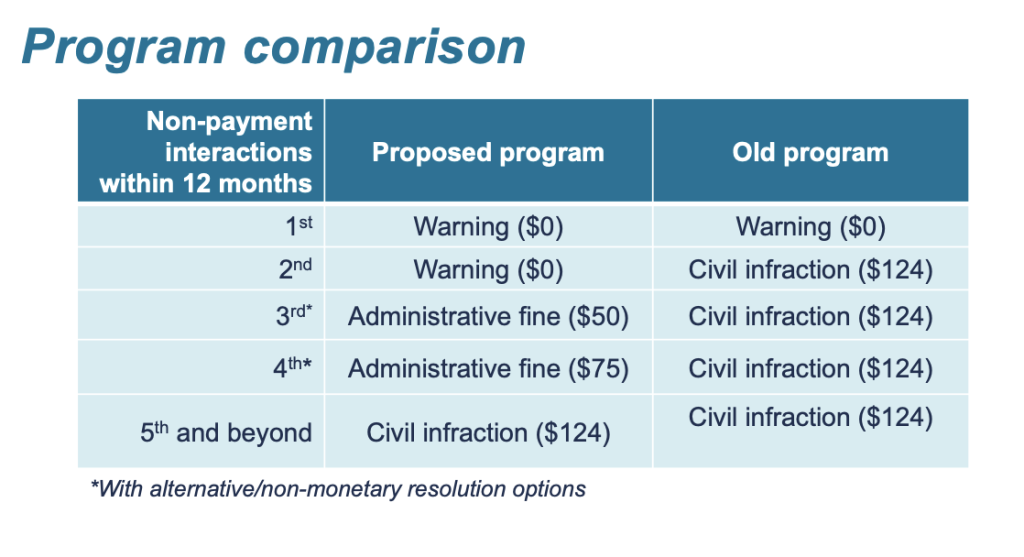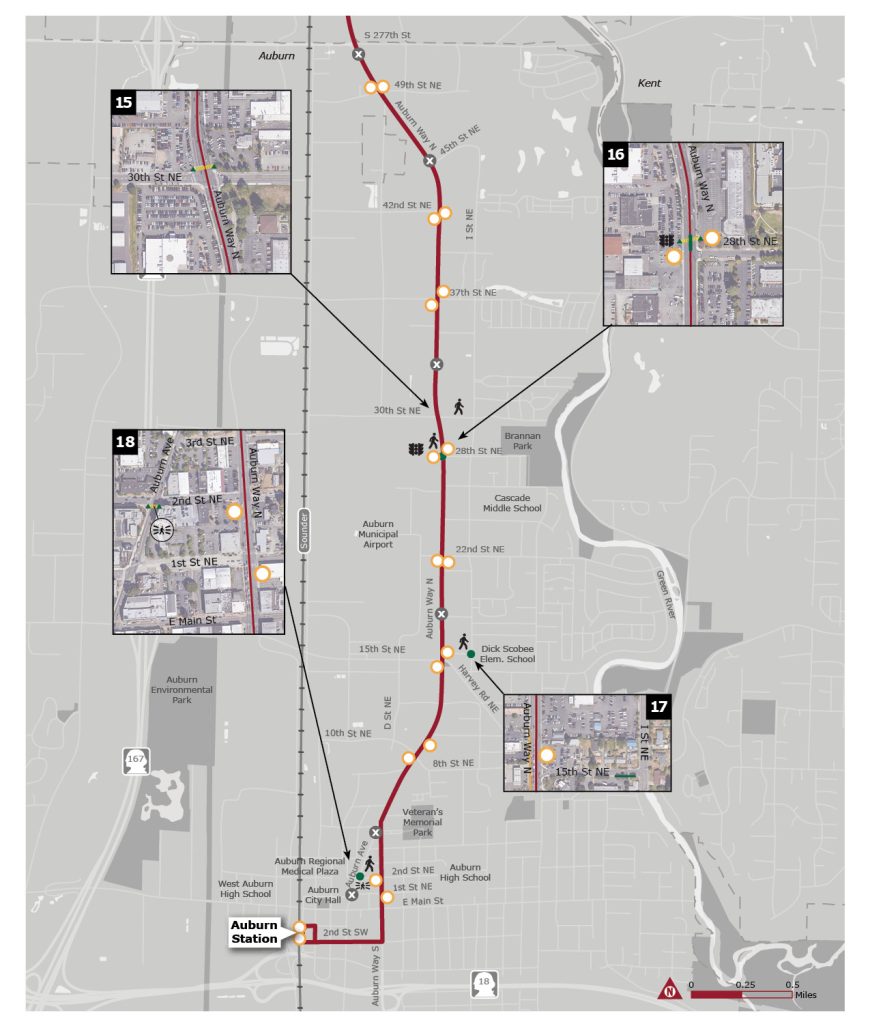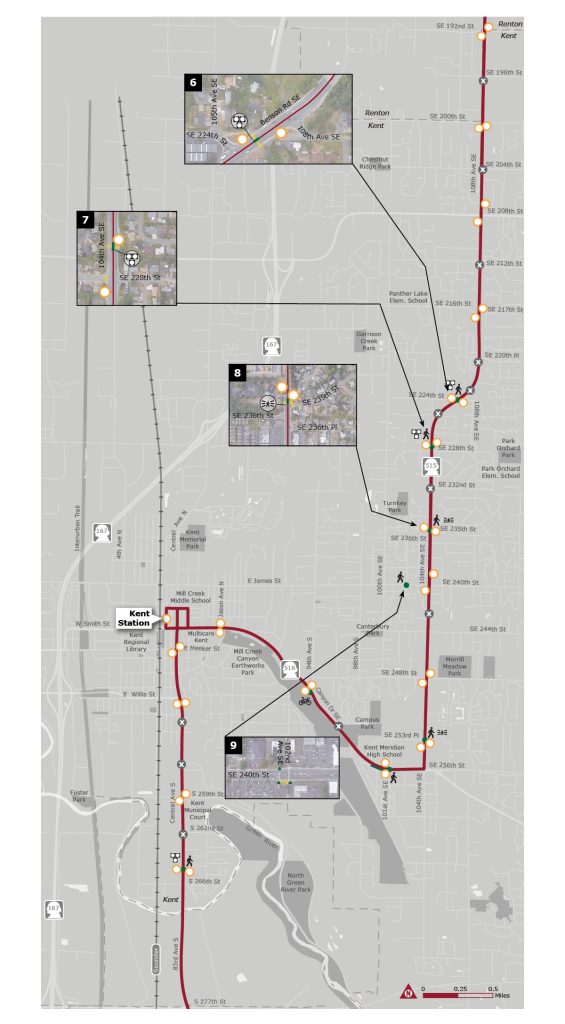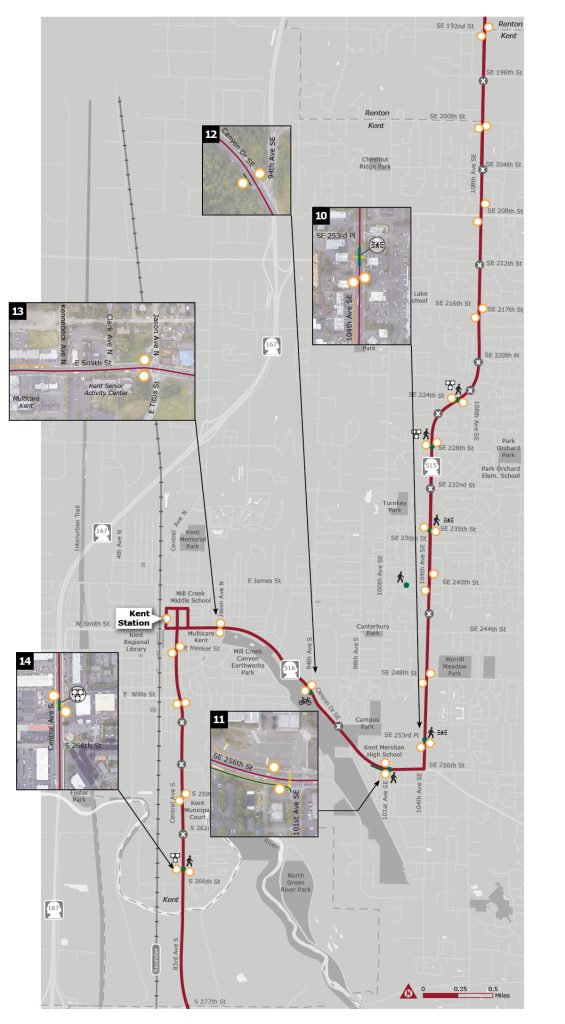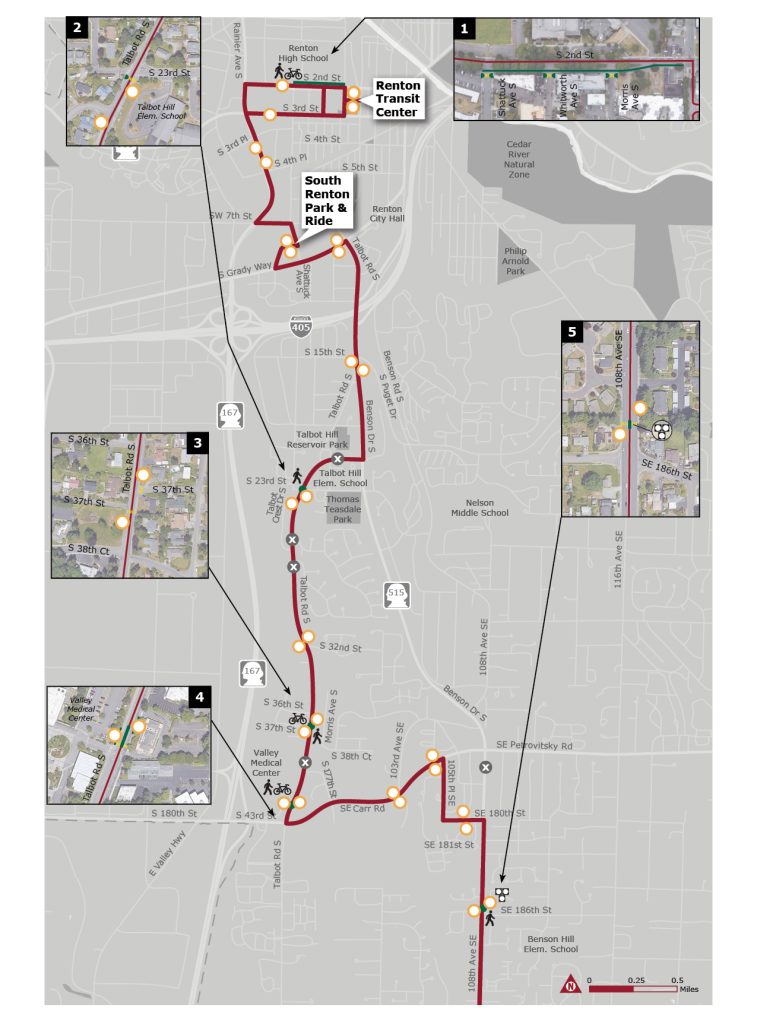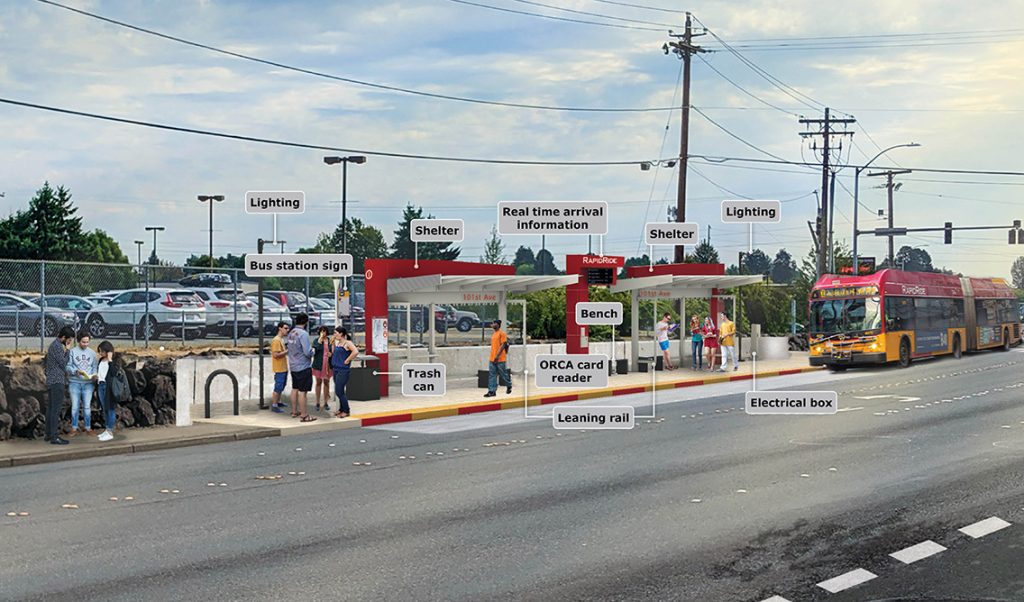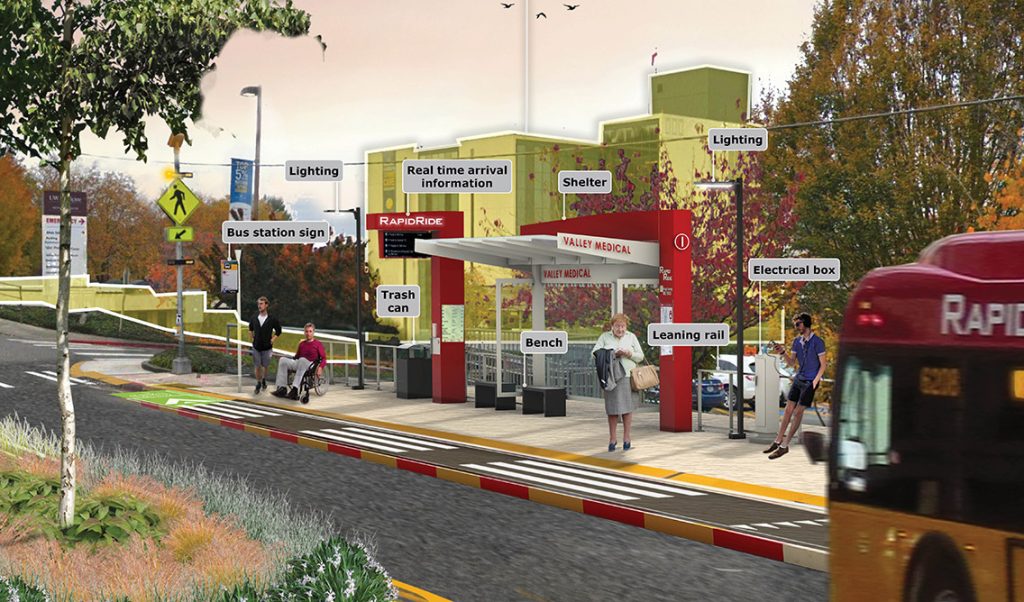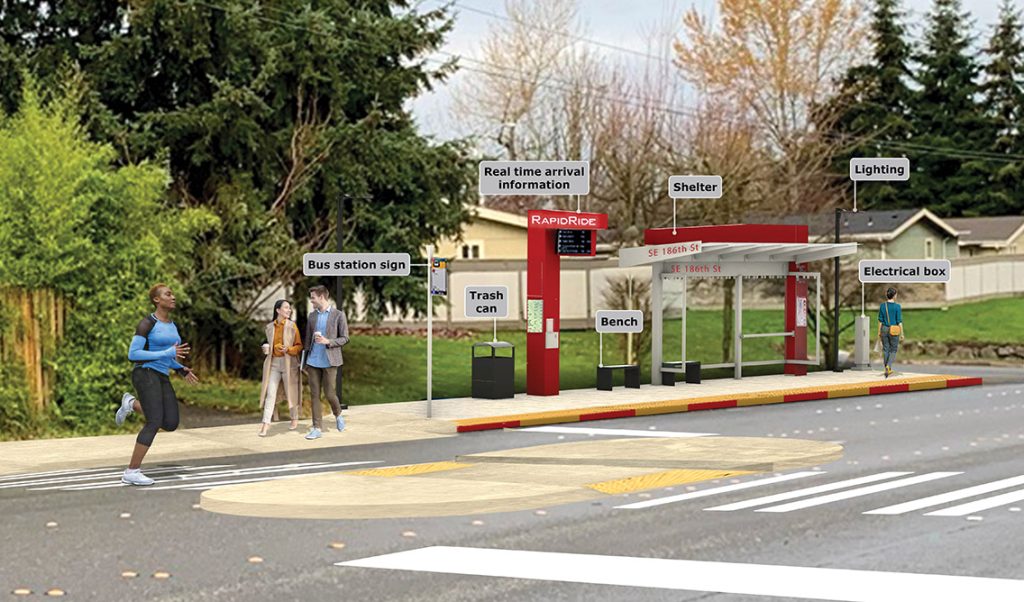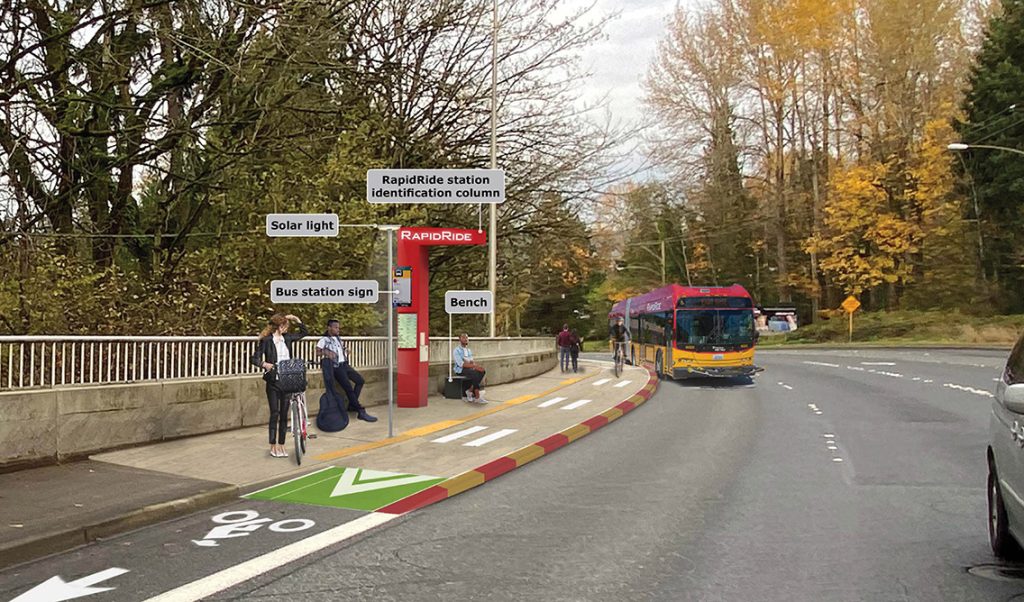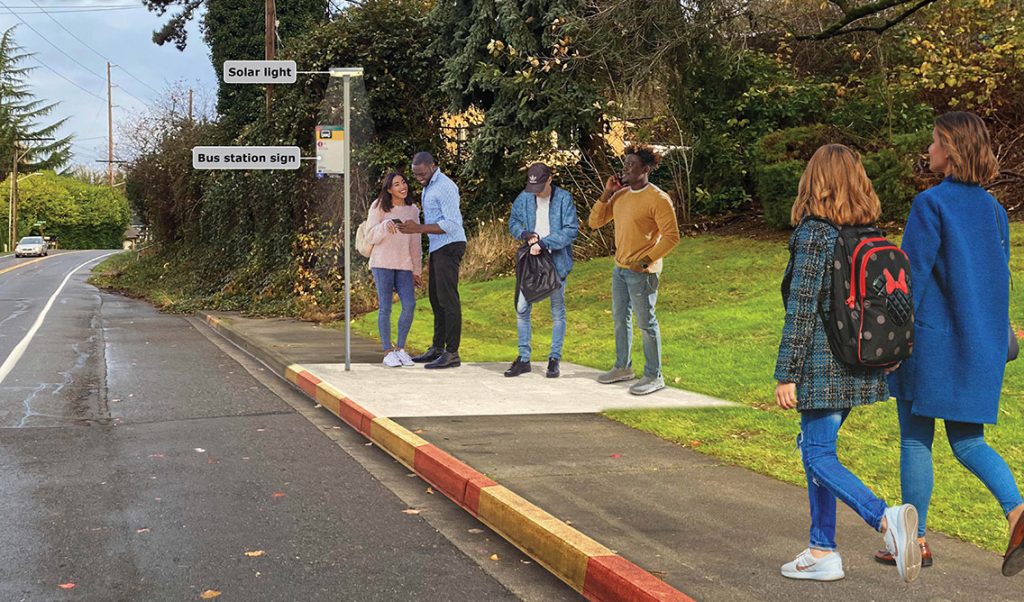This week’s Transpo Notes highlights include: future ORCA card capabilities, Sound Transit fare collection challenges and fare engagement future, concrete workers’ strike still delaying transit projects, I-405 interchange rebuild agreement approved, RapidRide I Line refinements, and new King County Metro bus restructure process begins.
Future ORCA card capabilities
Last Wednesday, the Seattle Transit Advisory Board was briefed on the next generation of ORCA, the regional transit fare card, coming this year, sorta. Rollout of the new ORCA system will still be phased. A new website and mobile app comes in the spring. Sales of new ORCA cards will then follow in the summer, which are backward compatible to existing ORCA terminals on buses and in stations. The ability to tap and pay with the new cards and digitally with smartphones will finally come in 2023.
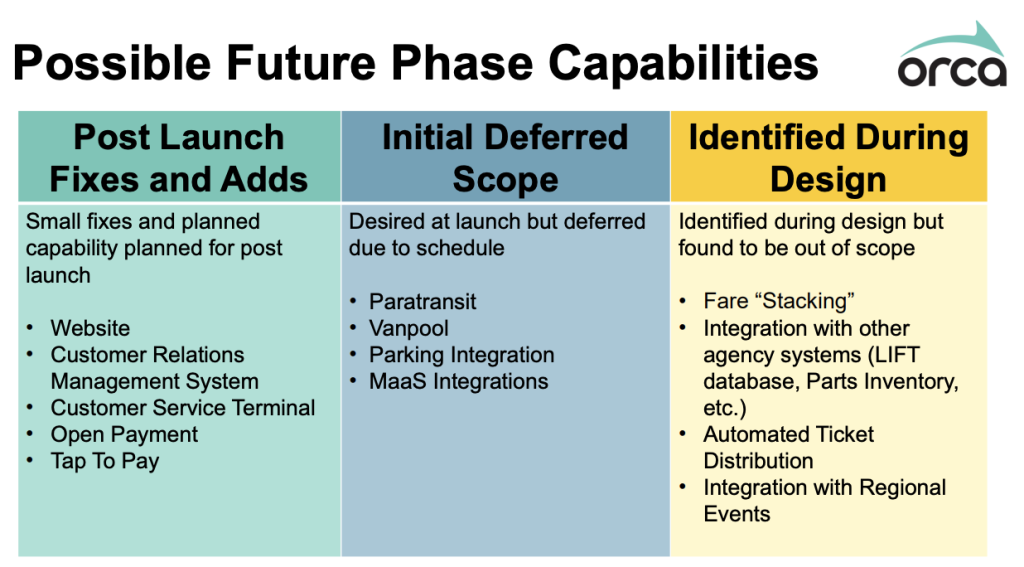
When the new system comes online, there will be a lot that riders like and don’t like about the functionality changes. Obviously digital payment smartphone could be a very handy change, especially to visitors, but it’s really what’s possible down the road. At the briefing, staff hinted at future capabilities with the system. These come in three buckets. After launch, the ORCA Pod is looking basic system fixes and customer service enhancements in administering the next generation of ORCA. In the deferred bucket, the ORCA system could be expanded to support payment of vanpools, parking, and other Mobility as a Service (MaaS) integrations. In a the third bucket for things identified during design, the ORCA system could be new capabilities for fare “stacking,” integration with events, and integration with other systems that agencies use.
Sound Transit fare collection a challenge on all fronts
On Thursday, Sound Transit devoted a large share of its monthly board meeting to the topic of fares and fare enforcement. Peter Rogoff, the agency’s Chief Executive Officer, warned of the financial hit that Sound Transit is facing due to lower fare collection. “Our recovery rates on farebox have been declining since 2016…our operating cost continues to rise most acutely on Link but really across the system and the board has not changed fares on the system since 2015,” he said. “We’re seeing really troubling results as it relates to [fare payment] compliance rates…and when you roll that all up into the finance plan and see what resources are available to the agency to execute on our many goals in the future is not a sustainable trajectory for the agency.”
Fare revenue has plummeted since 2019 due in part to the pandemic and declining ridership, falling from $96 million to $30 million in 2020. The agency’s financial plan assumes that fare revenues will cover about 27% of operating costs. Link farebox recovery has actually seen declining recovery rates since 2017 when it hit a high watermark just under 40% — the agency’s target is 40%. Since then, it’s fallen to only 5% after taking a serious dive precipitated by the pandemic. A real risk here, too, is that ORCA Business Account revenue has fallen as workers went remote from $48 million in 2019 (50% of total fare revenue) to $13 million in 2021 (43% of total fare revenue).
Fare evasion rates have also soared during the pandemic no matter which way the data is sliced up, adding to the fare revenue woes. The agency has two data methods: observed fare evasion as verified by fare enforcement officers and fare ambassadors, and the non-fare boarding rate which is measured by onboard electronic passenger counters in relation to fare media issued. The latter is a bit messy though since young children ride free, complicating the methodology. In either case, data suggests that the fare evasion has risen from somewhere between 3% to 14% in 2018/2019 to 10% to 70% in 2020/2021. Rogoff said this issue wasn’t limited to just one area of the system, but was generally worse on Link than Sounder services. He also recounted how he went to a number of Mariners games in the fall on Link and “saw almost no one tapping on or buying tickets” at Stadium Station.
During the briefing, Rogoff said that fare collection costs are actually low for Link. For every fare paid, the agency’s collection costs were about $0.19 (about 10.8% of fare revenue) in 2019, costing the agency only $4.6 million. Foregoing fare revenue, Rogoff further pointed out, actually does have real consequences to the agency unlike other transit operators that may have high-cost fare collection systems.
A board workshop lies ahead in February on how to address the fares issue globally. That could mean any number of things like lowering farebox recovery targets, modifying fare rates, or other strategies.
Equitable fare engagement approach
A related topic was raised at last week’s Sound Transit board meeting on the agency’s equitable fare engagement approach. In the fall, Sound Transit implemented a new pilot program with fare ambassadors, who check riders for fare media, document warnings for non-payment violations, and educate riders on options to get fare media, including special low-income programs. Fare ambassadors differ from the agency’s prior fare enforcement officers who actively issued $124 fines for non-payment (that could lead to criminal charges if unresolved) and looked more police-esque. During the pilot program, fines have been suspended.
The agency has some concerns with nascent pilot program that runs through May. Early shows that a low rate of rider are providing identification (under 40%) when found to have no valid fare media. This makes it impossible for the agency to track repeat non-payment violations by riders. Staffing is also a challenge since the retention rate is about 78% and staffing resources only allow that agency to check about 2% of total ridership. Still, data shows that the number of inspections per month have been going up month by month.
Sound Transit has a variety of recommendations to improve its fare engagement approach, which includes:
- Reducing ORCA LIFT and youth fares from $1.50 to $1.00;
- Working with communities, school districts, and state to fund ORCA cards for low-income youth;
- Revising the number of warnings in a rolling 12-month period for non-payment from one to two;
- Allowing fare ambassadors to flag riders that are unsheltered or experiencing homelessness so that they aren’t penalized;
- Modifying penalties for additional interactions in a rolling 12-month period for non-payment so third and fourth non-payment violations come with a $50 and $75 fine, respectively, or be resolved through several new alternative options (riders would not be suspended and could continue to ride the system); and
- Instituting an optional district court resolution mechanism for fifth non-payment violations in a rolling 12-month period as a civil infraction of $124.
Sound Transit did model what this new system would mean in terms of interactions, at least based upon trends in 2019. That model would suggest 51,000 first warnings, 3,000 second warnings, 1,700 third interactions, 200 fourth interactions, and 100 fifth interactions per year. However, Sound Transit CEO Peter Rogoff cautioned that 2019 was quite a different time from now and suggested not reading the model as gospel.
Concrete worker strike stalling transit projects
Also on Thursday, Sound Transit’s CEO Peter Rogoff outlined the continuing crisis to projects across the region as concrete workers remain on strike in King County. Because of the strike, Sound Transit has missed delivery of 14,000 cubic yards (about 1,400 truck loads) of concrete since early December. A week earlier, the workers’ union had been at the negotiating table with companies and federal mediator, but the talks didn’t go terribly well and fell through.
The impact of the strike is being felt widely. Other public agencies like King County, Seattle, Washington State Convention Center, and Washington State Department of Transportation (WSDOT) are being hit hard by the lack of concrete deliveries, too, for their projects.
So far, Sound Transit contractors have laid off 174 workers because of the concrete delivery delays. Rogoff also warned that additional 120 workers could be laid off at the end of January if impacts continued. And projects are increasingly becoming critically delayed.
NE 85th Street/I-405 interchange agreement
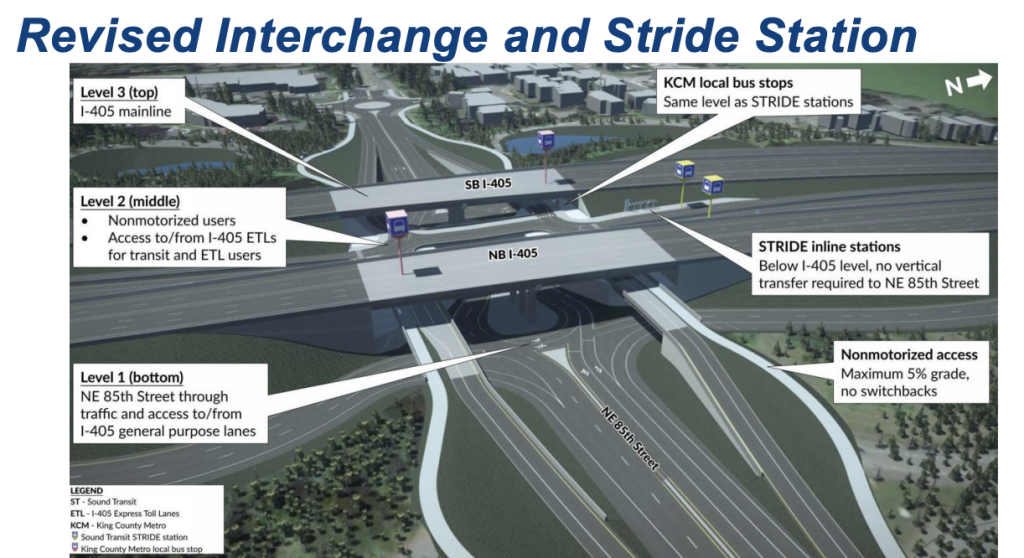
Additionally on Thursday, the Sound Transit board of directors approved a $287 million agreement (including contingencies) with WSDOT to build an in-line bus rapid transit (BRT) station and entirely new NE 85th Street/I-405 interchange in Kirkland. The project would deliver a new three-level interchange with direct access ramps to the high occupancy toll lanes that the S2 Line, an I-405 running Stride BRT line, will use. Stops are planned on the mid-level of the interchange, but the design is genuinely hard to love given the completely hellish environment that riders will have to face in perpetuity. For the meager ridership at this stop (somewhere between 300 to 1,000 daily riders), the project seems a colossal waste of money mostly supporting cars, not riders. Nevertheless, the project could be completed in 2026 and the S2 Line could be in service then or the following year.
Metro refines RapidRide I Line plans
King County Metro has refined plans for the RapidRide I Line as the project has moved through the 60% design process. The updates make tweak to planned stop locations and intersections. The new RapidRide line opens in 2025 and will run from Renton to Auburn via East Hill and Downtown Kent on an 17-mile corridor, replacing Route 160. Last year, we reported on the stop design approaches that Metro intends to use depending upon expect rider boardings.
In the online open house, Metro highlights some notable changes:
- “Metro considered community feedback in relation to where stations will be located. In doing so, some proposed locations have shifted. For example, Metro heard concerns about the station planned at E Smith Street and Jason Avenue NE Titus Street in Kent, and suggestions to move it to a more accessible location at the nearby Senior Activity Center. Metro used this feedback to reconsider the station’s placement. In 60% design phases, Metro relocated the station to Jason in front of the Senior Center, as suggested. Similarly, Metro used public feedback to shift the station planned at 30th St NE and Auburn Way N to a location closer to critical public services, at 28th St NE and Auburn Way N.”
- “Metro used community feedback to consider signal timings at intersections to make sure people have enough time to cross the street, get to their station, and safely board the bus. Feedback from a community member concerned about quick pedestrian crossing times on Auburn Way N encouraged Metro to broadly suggest signal timings of intersections affected by the RapidRide I Line to make sure people who walk, bike, or roll have enough time to cross the street.”
The online open house runs through February 20th. Full design is expected to be completed next year and then construction will begin in 2024.
Metro begins Lynnwood Link bus restructure process
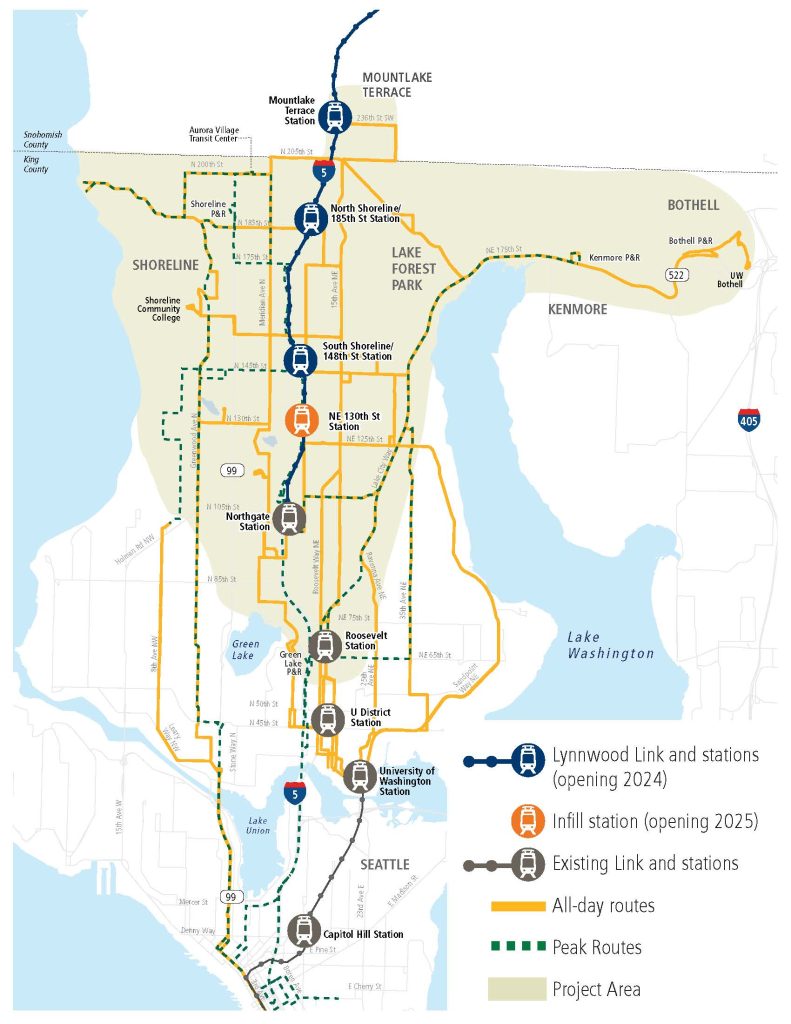
On Tuesday, Metro opened its bus restructure process around the Lynnwood Link extension. Because the light rail extension is planned to open in 2024 followed by an infill station NE 130th Street in 2025, the bus restructure could be partially broken into two phases. The scope of possible changes mostly could affect bus routes in Shoreline, Lake Forest Park, Kenmore, and Bothell and routes operating in Seattle from Roosevelt Station northward. These include Routes 5, 16X, 20, 28, 64, 65, 67, 73, 75, 301, 302, 303, 304, 320, 322, 330, 331, 345, 346, 347, 348, 372, and 522. An online survey is open through March 31st to gauge community priorities in a restructure. Service concepts are expected to be released around August and then early next year a formal service proposal should be published.
Stephen is a professional urban planner in Puget Sound with a passion for sustainable, livable, and diverse cities. He is especially interested in how policies, regulations, and programs can promote positive outcomes for communities. With stints in great cities like Bellingham and Cork, Stephen currently lives in Seattle. He primarily covers land use and transportation issues and has been with The Urbanist since 2014.

